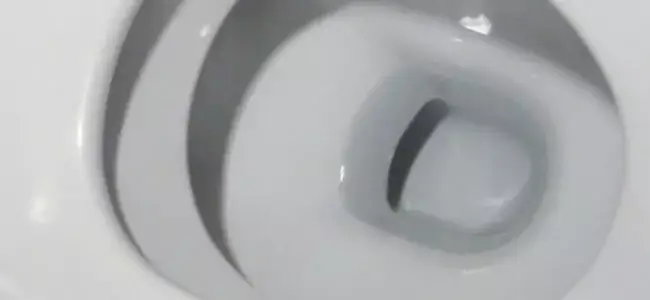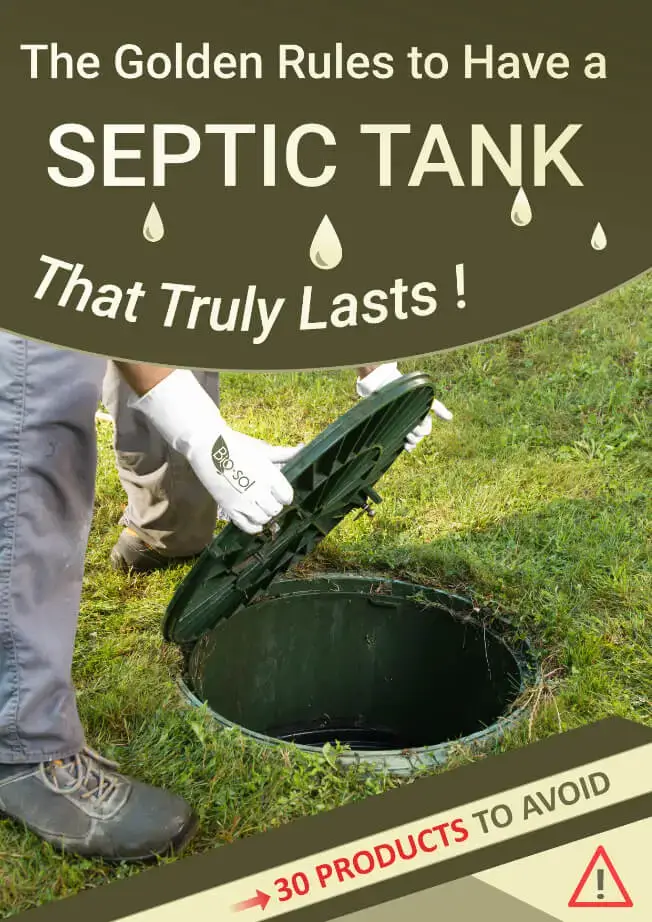The challenge of wastewater treatment around the world

TABLE OF CONTENTS
According to a recent report on wastewater treatment which was published by the UN, the world is wasting wastewater. This is especially so in underdeveloped and developing countries where less than 8% of the wastewater is treated. Untreated sewage and inadequately treated wastewater from industries continue to deplete water quality on the globe and the biggest challenge right now is how to start viewing wastewater as a solution rather than as a problem.
Wastewater can be viewed as an alternative source of water but the journey has to start from how the wastewater is collected, treated and disposed of. Wastewater usually has several pollutants and contaminants. These include;
- Heavy metals (e.g. copper, cadmium, nickel, chromium, zinc, and lead)
- Pathogens (e.g. viruses, bacteria, helminths and protozoa)
- Plant nutrients (e.g. nitrogen, potassium, and phosphorus)
- Organic pollutants (e.g. pesticides, polychlorinated biphenyls, biodegradable organics, and polyaromatic)
- Micro-pollutants (e.g. cosmetics, medicines, and cleaning agents)
All of the above quality issues can result in environmental and health problems which will ultimately result in economic impacts on society.
When water bodies are fed with excessive amounts of nutrients, especially phosphates and nitrates, the nutrients will stimulate excessive plant growth (e.g. algal bloom). This phenomenon is referred to as eutrophication. This can result in depletion of oxygen, a decrease in biodiversity, and a change in the species dominance and composition. All of these factors can result in a lowered quality of water. The UN estimates that Eutrophication has reduced water quality in rivers, wetlands, and lakes by at least one third globally. The worst-hit regions are Europe, China, South Asia, Japan, and Southern Africa. As the nutrient flow from agriculture increases, this problem will get worse.
Sewerage Systems
There are two broad categories of sewage systems; conventional/combined and the separate systems. In a combined system, both run-off and sewage water are conveyed in one pipe. For separate systems, different pipes are used to transport sewage and surface run-off. Separate systems are more effective in managing wastewater as long as they are properly installed and well maintained.
Most of the sewerage systems in developing countries were built as separate systems, thanks to lessons learned from the industrialized countries. Unfortunately, these systems haven’t been maintained very well in most of the countries. In some cases, the systems are now overwhelmed by population growth or the sprawl of impermeable infrastructure that is characteristic of urban settlements. As a consequence of this and other complications, some of the separate systems end-up cross-connecting sewage and surface run-off pipes. The essence of a separate system is to only treat the sewage but when sewage mixes with runoff water, it might be released back to the water cycle before it is treated. A research was done in Shanghai to try to ascertain the level of this kind of pollution and the inference made was that there was no advantage of using a separated system. The main problem was the illegal interconnections that are bound to happen over time.
An effective collection system plays a vital role in good wastewater management. Some countries do not have a good off-sire centralized treatment facility and some have installed them but they haven’t done a very good job of maintaining it. There are several reasons why this is the case but the main reasons are;
- Not planning the collection networks properly
- Networks that are old and decaying
- Not installing the systems properly
- The wrong sizing of systems installed
- Systems that do not have the resilience to storms and other related issues
- Inadequate maintenance and infective operation
- Lack of a solid regulatory framework
In situations where the sewerage systems are ineffective, it is not possible to accurately quantify the level of wastewater that is discharged into the environment. Old and decaying infrastructure compound to the problem because when the pipes break, they allow the infiltration of water into the sewage pipes and exfiltration of wastewater into the groundwater. This results in the contamination of drinking water supplies. Additionally, the presence of a sewerage system, even if it is very effective, doesn’t necessarily mean that there will be pollution-free disposal of wastewater. This is because sewage can sometimes be disposed of before it is treated. For instance, at least 40% of the sewage treatment plants in India were found not to conform to operational standards expected of such facilities.
Onsite systems
Lots of people rely on onsite systems for their sanitation. In developing and underdeveloped countries, some still use unimproved facilities like pit latrines although the adoption of septic systems is on the increase. In rural settings, pit latrines are used without the need for emptying because the effluent will slowly percolate through the soil and once they get full, they can just be filled and abandoned and another one dug up. However, the risk of contaminating groundwater is usually pretty high. If such on-site systems are not managed properly, fecal sludge can accumulate and eventually overflow into storm drains. For on-site systems, the collection and treatment of wastewater is arguably the weakest link. It is estimated that at least 2.4 billion people use on-site systems that generate fecal sludge which doesn’t get treated. Some of the common issues with on-site systems include:
- In some cases, the containment systems are poorly constructed or constructed in hard to access areas which makes emptying them a challenge.
- Some private pumping companies illegally dump the wastewater into watercourses and landfill sites
- In most cities, municipalities do not offer pumping and transportation services. These are usually provided by the private sector.
- Lack of sludge treatment facilities is another challenge
There is also a general misconception that on-site wastewater systems are merely temporary holding facilities before the wastewater is pumped and taken to an off-site sewage system for proper treatment. This notion makes users not to take the treatment of wastewater seriously because they assume that is not the purpose of an on-site system.
Wastewater treatment challenges
Domestic wastewater, if not treated properly, can have high pathogen concentrations. This poses a health challenge because communicable diseases could spread pretty easily. Exposure to untreated wastewater or contaminated drinking water will not only cause disease but can actually result in death. Approximately 1.45 million people die annually as a result of diarrheas alone. At least 50% of these cases are caused due to poor sanitation. Domestic wastewater is made up of blackwater and greywater. Blackwater contains excreta, fecal sludge, and urine while greywater is made up of kitchen and bathing wastewater. At the moment, almost half of the world’s population does not have a proper way of disposing of both greywater and blackwater.
Diseases caused by contaminated water
One of the biggest challenges of wastewater treatment is the diseases caused by pathogens in the wastewater. When the wastewater is not treated properly, these pathogens end up contaminating both surface and groundwater and this polluted drinking water can result in several diseases. The following tables list some of the pathogens that are common in wastewater and the diseases they are known to cause.
Table 1: diseases caused by bacteria found in wastewater
Table 2: diseases caused by Helminths found in wastewater
Table 3: diseases caused by protozoa found in wastewater
Table 4: diseases caused by viruses found in wastewater
Agricultural wastewater challenges
Agriculture plays a huge role in non-point water pollution. Some of the main issues with agricultural wastewater include:
- Sediment runoff – sediment runoff causes siltation and it also increases the risk of flooding.
- Nutrient runoff – phosphorus and nitrogen are the main pollutants in agricultural runoff. They are typically applied on farmland through fertilizers, animal manure, or municipal wastewater. If unchecked, these nutrients can lead to eutrophication in the receiving waters.
- Microbial runoff – this comes from livestock or the use of excreta as fertilizer.
- Chemical runoff – chemical runoff comes from herbicides, pesticides or any other agrichemicals that could lead to the contamination of ground and surface water. Residues of veterinary drugs could also cause pollution.
The biggest challenge with non-point source pollution is that it is hard to quantify it because it is not controlled directly. It is, however, clear that agriculture plays a huge role in the problem of nitrogen loading. For instance, a study established that Agriculture was the main source of water source pollution and the second-largest source of impairment of wetlands in the United States.
Sludge disposal challenges
There are three main final disposal strategies for sludge. These are:
- Disposal of sludge on land (special sludge deposits or landfills)
- Disposal in the ocean
- Disposal in the air (through incineration)
Ocean disposal is now forbidden in most countries because of the pollution implications. Additionally, depositing sludge in landfills is also being phased out in most countries. When sludge is incinerated, the incineration ash has to be treated as waste and so that isn’t a viable method of disposal. With this in mind, recycling seems to be the only viable long-term solution to the problem of sludge disposal. As the effects of pollution get more real, there is a huge chance that the disposal of sludge will eventually be phased out. Using sludge on land for farming also raises concerns about long-term health effects. There is, therefore, a need to ensure the sludge goes through some mandatory treatment steps to make it safe for renewal.
Because of the fears of possible food contamination, biological soils that are made from sludge can be used in green areas where food is not produced. These include sporting fields, golf courses, road embankments, and parks. Nonetheless, the same guidelines used for the production of sludge for farmland use must still be adhered to when making biological soils for green areas. The commonest use for sludge is its application on land as a soil conditioner or fertilizer. Treated sludge could also be used indirectly on land after utilizing it as an ingredient in the construction of biological soils. Sludge could also be recycled in a productization strategy. Productization of sludge is the process by which the sludge is mixed with other materials and then made into products that can be sold on the market. Examples of these products include biological soils, energy, nutrients, and metals.
The Energy Challenges
Plant operators in wastewater management facilities have to cope with an increasing demand for stringent environmental standards while at the same time trying to lower their operational costs. This delicate balance introduces a whole new set of challenges and energy efficiency is of the greatest concern. When you have inefficient wastewater management operations, you end up with excessive consumption of energy. Apart from increasing the operational costs, this also leads to the emission of greenhouse gases that are related to electricity generation. The carbon dioxide emissions all over the world have increased by at least 50% since 1990 and most governments are now putting pressure on municipalities to ensure they are playing their part in reducing the emissions.
Energy is one of the biggest expenses in wastewater management. In fact, it is estimated that a developed nation spends 2-3% of its electrical energy on wastewater management. Investment in high-efficiency technologies can help to lower down these costs by increasing energy efficiency. This implementation can be done at almost a neutral cost and yet it can help to significantly reduce emissions that are comparable to removing 11.4 million automobiles on the road. In addition to the regulatory framework, the reduction of energy costs is a top priority for waste managers. Energy is typically consumed right from the primary stage all the way down to the sludge digestion. Energy costs, therefore, take up a sizeable chunk of the operational costs. And as the energy costs are projected to continue rising for the next decade, every wastewater treatment plan has to start thinking of high-efficiency wastewater treatment technologies to reduce the operational costs.
To deal with this challenge, there is a growing interest in the use of biogas which can be generated from waste. But even more importantly, wastewater treatment facilities need to adopt advanced wastewater treatment solutions that will significantly reduce the energy needed. Intelligent technologies in wastewater management will transform the industry by reducing human intervention while at the same time delivering reliable and efficient energy solutions. Examples of such technologies include the following;
- smart pumps – they increase operational efficiency.
- low-speed submersible mixers – they have integrated speed control and this means they only use energy on a need basis. They quickly adapt to fluctuations in operational requirements to keep energy consumption at a bare minimum
- integrated biological control software – customizable software and hardware systems can also be used with the existent technologies to enhance efficiency. For instance, a process performance optimizer will help the operator to always be on the know of the real-time treatment process conditions.
Automation processes like those described above in treatment plants will not only help the plant operators to achieve a higher quality of treated water but it will be done more efficiently. Automated technologies have self-diagnosis inbuilt in them which makes diagnosis and maintenance easier as well.
Conclusion
Wastewater treatment and management face lots of challenges but the biggest concern is the impact the wastewater will have on the ecosystems of the world. When the wastewater is not treated properly, the pathogens therein will find their way into the drinking water which can ultimately result in the spread of waterborne communicable diseases. It is therefore incumbent upon every government as well as every individual to play their part in making wastewater treatment more efficient and effective.
OUR LATEST BLOG POSTS

Strange facts about septic systems
If you are a septic system owner, you might have heard all manner of myths. For instance, there is a common myth that throwing a dead cat in the septic tank can help rejuvenate bacteria and thereby make the septic tank more effective. But is this even true? In this article, we will not only answer that […]

Soils types and their impact on septic systems
SOILS TYPES AND THEIR IMPACT ON SEPTIC SYSTEMS However good your septic system is, it depends on the right soil type to complete the process of purifying the wastewater from your home. The soil type in the drainfield area will determine how well the effluent is filtered and if the water that is sent back to the […]

Avoid flushing these if you have a septic tank
Most homeowners wrongfully assume that their toilet can serve as some sort of garbage disposal. As a result, they end up flushing all manner of things in the toilets. Some of the things that are flushed down the toilet are actually innocent mistakes because homeowners think that is the right way to dispose of the products while in other cases, it is just a don’t care attitude. Whichever the case may be, flushing some of these things can result in septic system failure and it could cost you a fortune. We have rounded up some of the commonly-flushed products that you should never flush if you have a septic system.
PERFECT! I WOULD NEED...
Discover which products are the best for your needs!You can contact us at 1-800-378-6132 (toll free) or click on the following button to access our free online evaluation.
GET A QUOTE ONLINELog in to your account
Whoops! It happens sometimes...
CREATE A NEW ACCOUNT
CONGRATS!
You are now registered and ready to go. You can add and change any of your information on your client profile.
Unfortunately, we do not ship our products to the USA at the moment.
But, if you live in the United States and would like to order them, please fill in the form below. You will then be notified as soon as they are available in your country.
Thank you for your understanding!
Malheureusement, nous n’expédions pas nos produits en France pour le moment.
Mais, si vous êtes résident français et aimeriez les commander, remplissez s’il vous plaît le formulaire ci-dessous. Nous pourrons ainsi vous aviser aussitôt qu’ils seront disponibles dans votre pays.
Merci de votre compréhension!

-
30 products to avoid
-
What to replace them with
-
And everything you should know about your septic system
DOWNLOAD THIS FREE EBOOK!
Which email address should we send it to?


